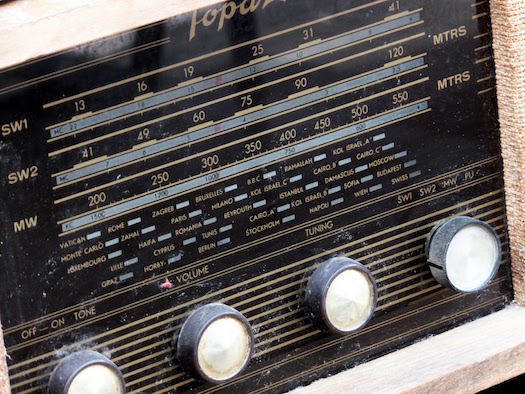Radio Tomorrow with James Cridland
In the Coachella Valley in California, two AM radio stations have just shut down: KPSI and KWXY. The closure came with a two-hour special program, looking back at the history of the station.
These closures are just one indication of the health of AM radio. In other parts of the US, the slightly oddly-named “AM Revitalization” program is allowing AM stations to simulcast on new FM signals: something I’m not sure I’d call revitalization.
In Canada, CKSL AM 1410 in London, Ontario also closed last week. In Israel, Germany, Russia and the Netherlands, many prominent AM broadcasters have gone dark. The countries of Belarus and Serbia have recently ceased all AM transmissions. Some AM services in the UK have also recently closed.
Try and get AM radio in your BMW i3, or your Tesla Model X, and you won’t find it. It’s been removed: because these electric cars make too much interference to the AM band. It’s not just electric cars, either: everything from tram tracks, cheap LED lights or DSL broadband connections cause interference to the AM band.
Unlike FM, AM’s reception requirements mean it’s almost impossible to put in a mobile phone or other consumer electronics. As a consumer experience, it’s poor: no RDS or anything other than “tune in using a random number”; no stereo; not hifi-quality sound. Many never think to hit the ‘AM’ button on their radio.
For broadcasters, AM is hugely expensive to run in terms of electricity bills. At least in Europe, many of the transmission masts date from the 1940s, and will soon reach end of life. Maintenance for AM is more onerous than FM, too: a station I worked at fell off-air once because (and this is true) the grass hadn’t been cut at the transmission site.
So, what’s AM’s future?
There are parts of the world where AM still reigns supreme. In regional areas of countries like Australia, AM remains the only serious way to cover thousands of miles of sparsely-populated terrain. There are still market-leading AM stations in North America that are successful in terms of audience and revenue. AM’s unlikely to die quickly here.
Digital radio technology exists to significantly pep up the waveband. In the US, HD Radio works astonishingly well on AM, offering an FM-like sound quality experience.
Across the rest of the world, DRM30 – Digital Radio Mondiale, another digital product – again makes a tremendous difference to AM radio’s quality and capabilities – adding data as well as significantly better sound. However – with the notable exception of India, DRM hasn’t yet become a consumer success. It’s a tremendous technical achievement, but its commercial take-up appears slow.
I love AM. I did a short stint on late-night AM radio, and loved the feeling you got when on-air (and the ever-present Radio Vatican accompanying my every word). But – especially for metro areas, where interference is growing (and AM transmitters are being forced further away from cities), I can’t see much future for AM. If you’re still earning the majority of your revenue from AM broadcasting, I hope you’re planning for the future.
There are so many ways to reach audiences in radio’s multi-platform future. The future for radio is bright. However, only the fittest platforms will survive: and I’m afraid – much though I’d like it to be – AM isn’t one of them.
As an aside, I wrote this column while listening to Pandora. As I almost completed it, Pandora put this song on. Spooky.
About The Author
 James Cridland is a radio futurologist: a writer, speaker and consultant on the effect that new platforms and technology are having on the radio business across the world.
James Cridland is a radio futurologist: a writer, speaker and consultant on the effect that new platforms and technology are having on the radio business across the world.
He writes for publications across the world, and runs media.info the worldwide media information website. He also runs a free weekly newsletter with news of radio’s future.
British by birth, James lives in Brisbane, QLD and is a fan of craft beer.


AM stations are far and away the biggest raters in Australia's biggest markets. No one is tuning out because of a bit of crackle.